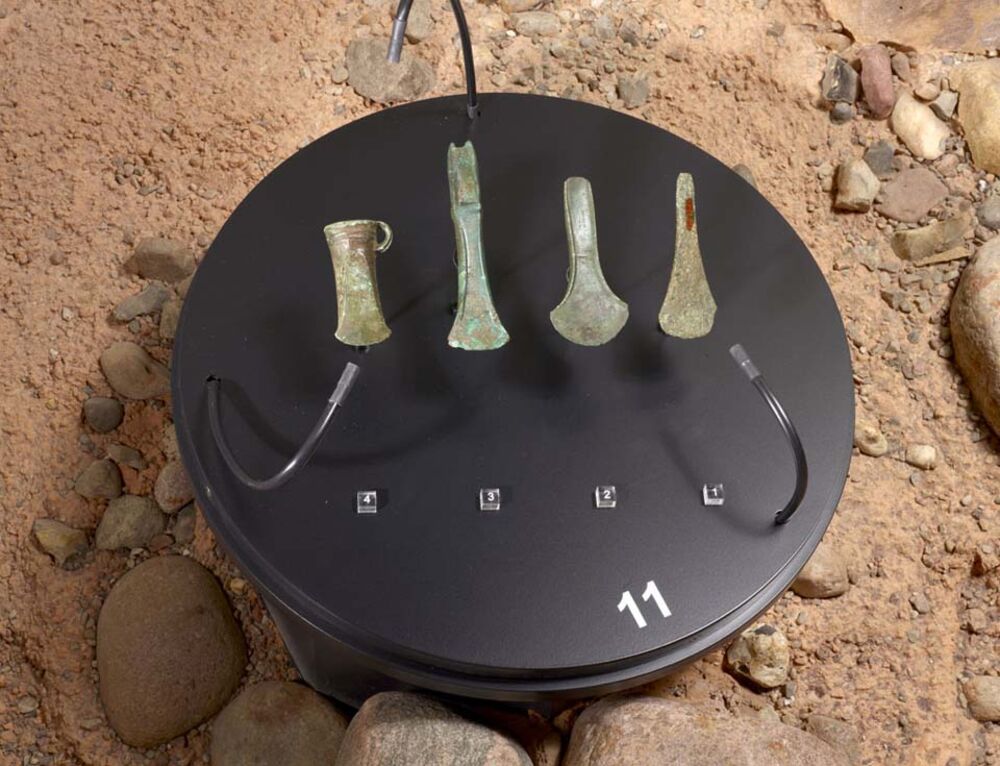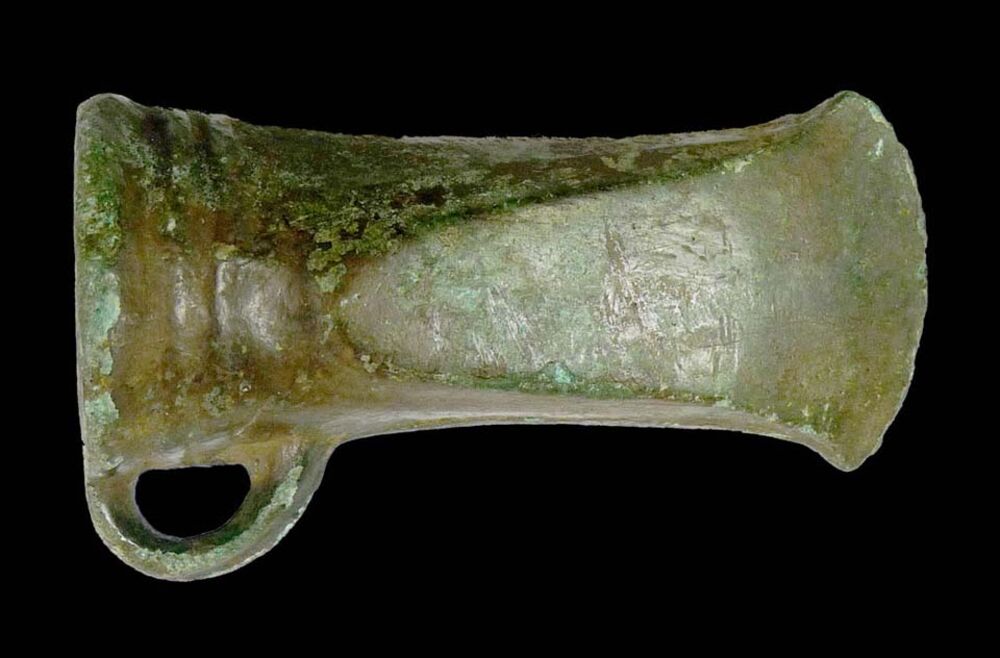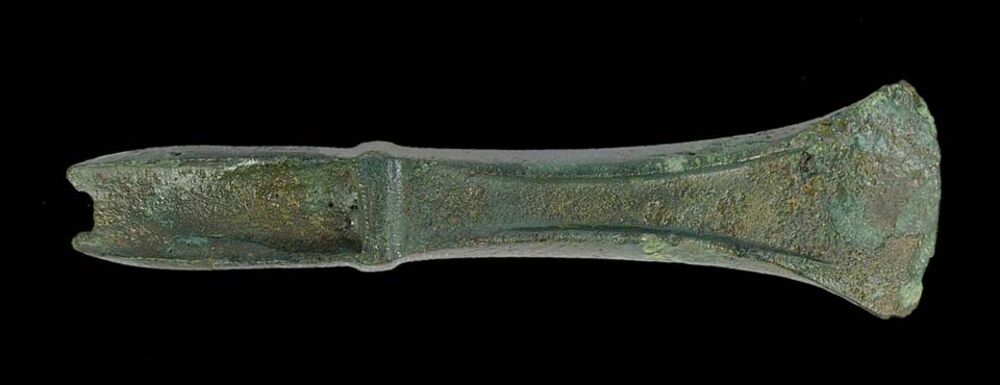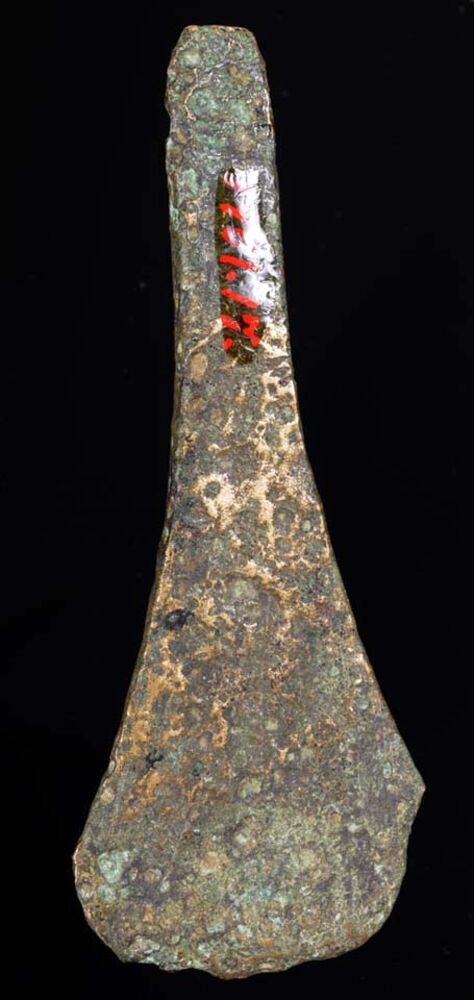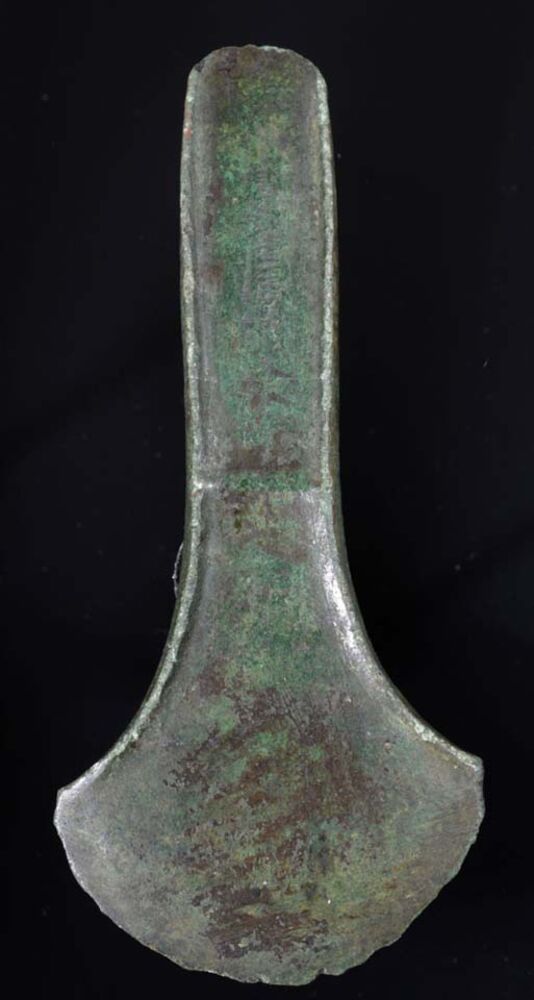11 Axe typology
Until more exact means of dating were available, the typological method played an important part in archaeology for many finds. By establishing typological sequences, the developmental stages and thereby the chronological sequences of finds can be determined. This is illustrated by the axes here on display: The earliest metal casters imitated the forms of flint axes in copper or bronze. By and by, technical improvements in the hafting caught on. First, the axes were equipped with flanges, which allowed for a firmer embedding into a wooden shaft. Later, they were provided with a stop-ridge, which prevented the blade from being driven too far into the shaft on impact.
Info: Showcase 11

Flat Hatchet
Age: 2000 - 800 v. Chr. Bronze Age
Bronze Age: Metal extraction began as early as 6,000 years ago in the Middle East, but reached Europe not until much later. Bronze, a copper-tin alloy, first appeared in Western Europe around 1800 BC. The use of metal was accompanied by historical developments of the greatest importance. Mining and processing required distribution; i.e., exchange and transport of raw materials. There were numerous transport routes and means for large quantities of ore and finished products. Transport was obviously by cart - which presupposed the general spread of the wheel - but also across rivers by raft and dugout canoe.
Material: Bronze
Location: Pestrup

Flanged Axe
Age: 2000 - 800 v. Chr. Bronze Age
Bronze Age: Metal extraction began as early as 6,000 years ago in the Middle East, but reached Europe not until much later. Bronze, a copper-tin alloy, first appeared in Western Europe around 1800 BC. The use of metal was accompanied by historical developments of the greatest importance. Mining and processing required distribution; i.e., exchange and transport of raw materials. There were numerous transport routes and means for large quantities of ore and finished products. Transport was obviously by cart - which presupposed the general spread of the wheel - but also across rivers by raft and dugout canoe.
Material: Bronze
Location: Loopstedt

Palstave
Age: 2000 - 800 v. Chr. Bronze Age
Bronze Age: Metal extraction began as early as 6,000 years ago in the Middle East, but reached Europe not until much later. Bronze, a copper-tin alloy, first appeared in Western Europe around 1800 BC. The use of metal was accompanied by historical developments of the greatest importance. Mining and processing required distribution; i.e., exchange and transport of raw materials. There were numerous transport routes and means for large quantities of ore and finished products. Transport was obviously by cart - which presupposed the general spread of the wheel - but also across rivers by raft and dugout canoe.
Material: Bronze
Location: Dornsode

Socketed Axe
Age: 2000 - 800 v. Chr. Bronze Age
Bronze Age: Metal extraction began as early as 6,000 years ago in the Middle East, but reached Europe not until much later. Bronze, a copper-tin alloy, first appeared in Western Europe around 1800 BC. The use of metal was accompanied by historical developments of the greatest importance. Mining and processing required distribution; i.e., exchange and transport of raw materials. There were numerous transport routes and means for large quantities of ore and finished products. Transport was obviously by cart - which presupposed the general spread of the wheel - but also across rivers by raft and dugout canoe.
Material: Bronze
Location: Altenwalde

